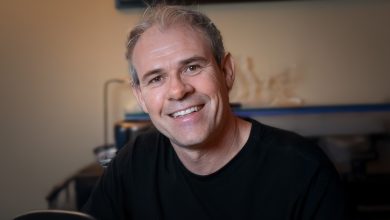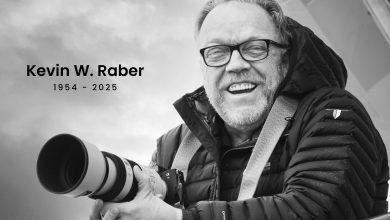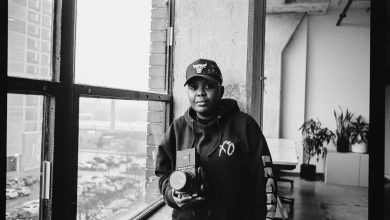TWiP #276 – The End of the DSLR
Hosts: Frederick Van Johnson, Eric Cheng, Sara France and Dave Dugdale
Episode Overview
This week on TWiP:
- Do the Nikon D4 and D800 pass the BBC test? (8:40)
- Photography one year after Steve Jobs' passing (30:15)
- Getty Images celebrates half-millionth image in its Flickr collection (40:20)
- And an interview with Model Mayhem's Brian Diaz and Dean Johnson (47:30)
Listen in as Eric Cheng, Sara France and Dave Dugdale join Frederick Van Johnson to discuss these topics and more on this week's episode of TWiP.
Eric: Quik Pod DSLR and POV Handheld Monopod. $35 retractable monopod with quick release and standard tripod screw on top (tilts up and down).
Sara: Shoot Dot Edit & Aperture: New Aperture features coming out soon.
Dave: Carl Zeiss Lens Cleaning Cloths and Cleaning Solution.
Frederick: Essential Web Marketing for Photographers course – www.essentialwebmarketing.com & Mediabytes.com
1. Lytro.com
2. Earthflight
3. GoPro.com
4. Eric Cheng's “Screaming Turtle” photo
5. “Shark Diving French Polynesia!” & What it's like to freedive under a whale shark
6. Dave Dugdale's video about “How To Clean Your DSLR Camera Lenses”
Interview with Model Mayhem's Brian Diaz and Dean Johnson
This week, Frederick speaks with Model Mayhem's Brian Diaz and Dean Johnson. Get an inside look at what Model Mayhem is, who it caters to and how you can pursue shooting models while avoiding some common pitfalls. You can learn more about Brian and Dean – and their work at Model Mayhem – by visiting modelmayhem.com.
Please Support our Sponsors:
This episode is brought to you by: The New Squarespace. Squarespace introduces a new content management system, making it faster and easier to create a high-quality website or blog. Check out the new mobile-responsive designs with automatic device-scaling and more than 50 other new features. For a free trial and 10% off your first purchase on new accounts, go to SquareSpace.com/TWiP and use offer code TWiP10.
This episode is brought to you by Shutterstock.com. Find over 20 million stock photos, vectors, illustrations, and video clips. If you are looking for images for your website or blog, print ad, trade show swag or even apps, Shutterstock is the way to go. Over 10,000 new images are added each day. For 30% off your new account, go to Shutterstock.com and use offer code TWiP10.
Connect with Our Hosts & Guests:
Eric Cheng: Portfolio, Blog, Twitter, Google+, Facebook
Sara France: Portfolio or Twitter or Google+ or Facebook
Dave Dugdale: Portfolio, Twitter, Google+
Frederick Van Johnson: www.mediabytes.com or www.twitter.com/frederickvan or Google+
Credits:
Pre-production by: Patrick Reed
Post production by: Suzanne Llewellyn
Bandwidth provided by: Cachefly
Intro Music by Scott Cannizzaro
Photo Credits: Shutterstock







Sigh; the response to the user query about Nik software with LR / PS was “not even wrong” I am afraid and surely you know better! PS converts from RAW into the PS workspace – which you select as 8/16/32 bits/channel along with a colour space. You then edit the pixels in the digital representation of the image in this workspace and you have to save this file separately to the RAW file. LR does convert RAW into its internal colourspace (which, depending on the source material I believe is Prophoto and either 16bit or 32 bit / channel) for the purposes of viewing – but edits within LR are a series of pixel transformations that you specify through your sequence of development actions and do NOT result in any new file. Unless you export it of course. This is where it becomes relevant to NIK. All plugins require LR to export a file for them to manipulate; they in effect force LR to “make the recipe” you have specified with your development actions. This does create a new file. So NIK in both PS and LR is working on a file separate from and additional to the RAW file. So LR is non-destructive – UNTIL – you invoke a plugin in which case a new file copy is made and NIK then works on that. The output then is a separate file which is stacked with your LR RAW orignal file. NIK is “destructive”, in that it transforms file pixels, in every situation.
I think RodLaird addressed the question re LR/PS non-destructive edits as regards to plug-ins. But, from my perspective, the real problem in Frederick’s comments was that the audience could easily draw the mistaken conclusion that “PS is non-destructive.” It *can* be largely non-destructive through the judicious use of RAW tool, smart filters, smart objects, and when you have no other choice, layers. But it is all too easy to do destructive edits in PS. In fact, for most of us who use LR and PS, we now tend to use PS for that small minority of edits that we weren’t able to do non-destructively in LR and we know how careful we must be to make sure we do those PS edits non-destructively. So, while I think it’s fundamentally wrong to assert that PS is non-destructive, I think that Frederick is right that you can generally do many edits in PS non-destructively if you’re very, very careful.
Thanks RodLaird & Eoonline. The gist of what I was trying to say (likely unsuccessfully) was that raw data is read-only, and as such can’t be altered… or destructed. Data derived from that data manifests as editable pixels and as such can be (and usually is) altered. Eoonline, you are correct, that through the judicious use of SmartObjects one can effectively build an entirely non-destructive workflow. But in my experience, in most cases that’s over-kill. As long as the artist is aware of what’s happening with his pixels and takes care to insure the highest quality at the end of the edit… then working completely non-destructively isn’t all that important.
Agreed and thx for the clarification. Re non-destructive PS workflow, I agree that it can be taken too far, but I personally err towards leaving myself some breadcrumbs (and now that I shoot RAW, I at least have the original), because as my eye and my PS-skills evolve, I find that my edits from several years ago were too heavy-handed. I suspect that in a few years, I’ll have the same reaction to my current work. I shoot RAW when I can, but when I can’t (e.g. iPhone), I make sure edits are non-destructive. In short, while “pixels were meant to be punished”, I just want to make sure it’s not a capital punishment. 🙂
I think DSLRs will be relegated to high end, full frame cameras. The mirror-less cameras are not compelling to me unless the form factor is more like an SLR. Having a view finder gives you much more stability in hand hold. Of note is a Samsung model that at first glance, looks like an SLR, but is in fact a small mirror-less camera. Also keep in mind, you are able to mount a “big honking” lens on a mirror-less system, so the body size is irrelevant. An SLR form factor will help with “Camera clout” for clients.
Looking into a crystal ball…
1 – Top of the heap, Hasselblad and larger frame cameras.
2 – Full frame DSLRs
3 – APS-C frame DSLRs on the way out, with mirror-less cameras filling the void.
4 – APS-C frame point and shoots on the high end, fixed lens, possibly RAW.
5 – Small frame point and shoots, JPEG only, fixed lens.
6 – Phones with cameras on them.
Love the show Frederick, keep them coming.
The audio quality of the interview on this one was unbearable. I had to skip forward to the end.
Since the last few TWIP episodes most talks been about smaller cameras going to replace big cameras. But I would like to know what you think about big sensors quality against small sensor quality for weddings and fast paced commercial photography.
In my view crop sensors such as fourthirds do not have enough quality for post production and crops we need for weddings and some other social events, as quality I mean noise/detail.
Fullframe and medium format cameras require bulkier and heavier lenses and I have yet to see a crop lens bringing the same sharpness and chromatic correction.
I agree that mirrorless fourthirds are great for casual photography, but if I see someone with small camera in my wedding I can’t think of it being a professional shooter not because the size of the camera, bu because the small camera doenst have the speed, iso and stability required for a good picture. what you think?
To be frank, I am not sure that DSLRs are completely dead. I think the strides that mirror-less cameras are making is great. But, I think it will make a lot of impact in photography which requires the camera to be small, lightweight and discreet – like street photography.
However, the one thing that I like about DSLRs or SLRs for that matter is that you get to look at a scene with a visual aid which has many more times more dynamic range than anything that any sensor currently can capture – the human eye. That not only helps during days when you have excessive amounts of bright lights, but also during really dark nights where the sensor will not be able to record details in those areas. Further, I don’t have to turn my camera on just to test the idea that the scene before me will make a worthwhile shot.
My concern about mirror-less cameras is that it may move users to consumption over simply things like which camera has more resolution for the EVF. Or which one displays colors better? It is bad enough for some time we were wooed by manufactures over the idea of more MP was better and we spent money on this concept only to learn later that less was better because there was less noise. Now, the next step seems to be to remove the human eye and see if more money can be made there. It would be simpler if you simply let me see with my own eye.
To me, one of the better constructed “mirror-less” cameras is the Leica M series or perhaps the new FujiFilm Xpro 1. In spite of all the talk about getting mirror-less cameras which provide EVFs, cameras like the Leica M series have not done away with using the human eye for focusing or for studying the scene.
To follow up RodLaird’s post with a question, are there any plug-ins (in referance to Nik software: pre-set effects) that work with the RAW file?
I would like to ask the same question for creating HDR’s from RAW files (plug-in or stand alone program). Are there any and if so, what are they?
It was a nice conversation indeed!